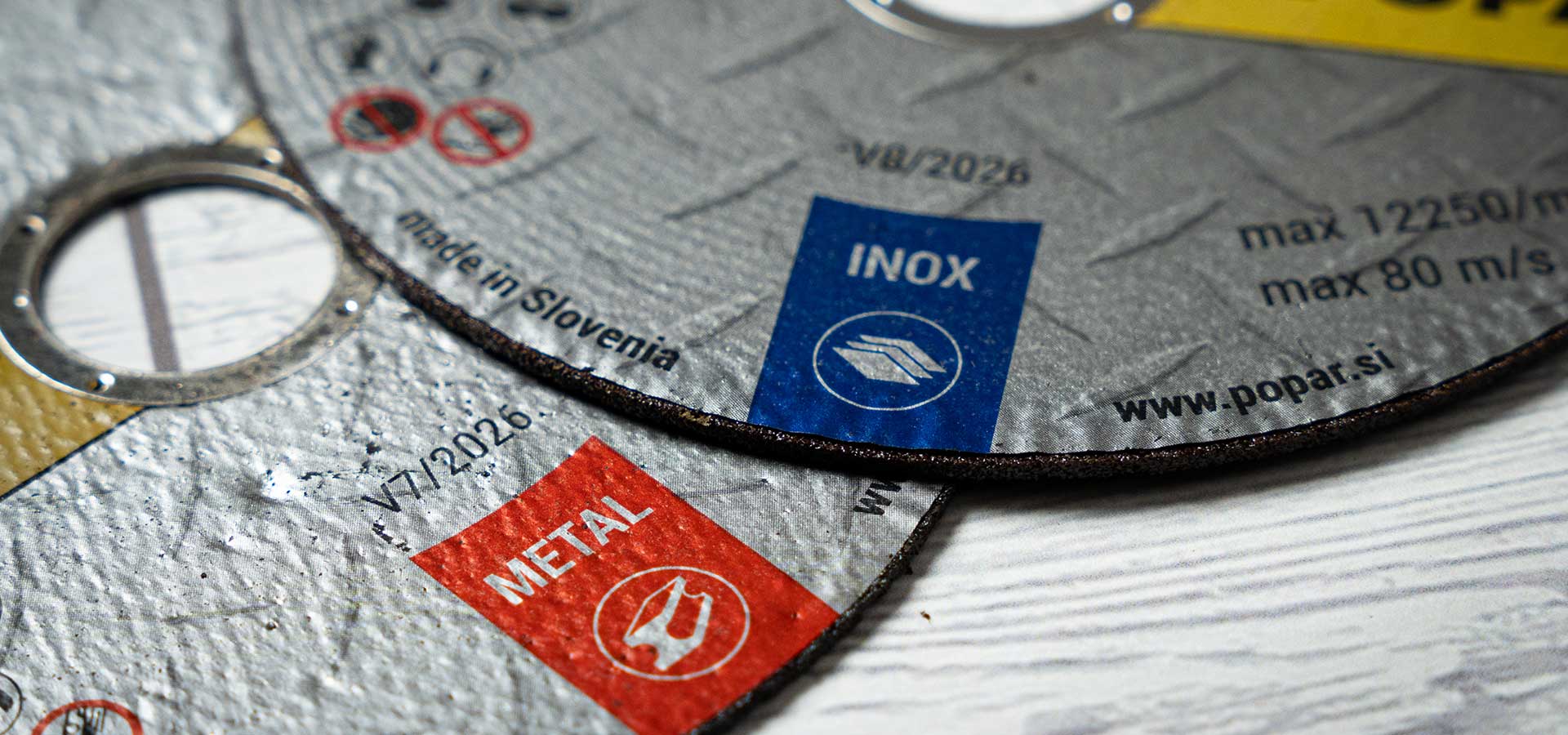Key certifications for cutting & grinding discs in the EU

Professional and industrial users should never treat cutting or grinding discs as mere consumables. Their certifications, safety markings, and proper usage protocols directly impact job quality and worker safety. By adhering to EN 12413, verifying oSa membership, and understanding disc markings, professionals and distributors can ensure efficiency, reliability, and compliance in every task.
1. EN 12413 – Abrasive products for cutting and grinding
- This is the primary European safety standard for bonded abrasive products like cutting and grinding discs.
- It specifies safety requirements regarding:
- Raw materials
- Labeling and marking
- Dimensional tolerances
- Maximum operating speed
- Discs must comply with EN 12413 to be legally sold in the EU.
2. oSa® – Organization for the safety of abrasives
· oSa is a voluntary certification that enhances EN 12413 compliance.
· Indicates the manufacturer maintains high safety, quality control, and manufacturing standards.
· The oSa logo is a mark of trust for professionals and distributors.
3. CE marking
· While CE marking is not mandatory for abrasive discs (they fall under the General Product Safety Directive), some manufacturers voluntarily use it.
· It represents conformity with basic safety principles under EU law, especially when products are part of larger systems or sold with tools.
Required markings on cutting discs (standards)
Professional-grade discs must include the following mandatory markings, per EN 12413:
Marking | Meaning |
Type (e.g., "41", "27") | Shape and use (e.g., flat, depressed center) |
Abrasive Material (e.g., A, C, Z) | A = Aluminum Oxide (steel), C = Silicon Carbide (stone), Z = Zirconia |
Grain Size (e.g., 24, 36, 60) | Lower = coarse (fast cutting), Higher = fine (smoother finish) |
Hardness Grade (e.g., R, S, T) | Softer grades wear faster, harder grades last longer |
Bond Type (e.g., BF) | BF = Resin Bond with Fiber reinforcement |
Dimensions (e.g., 125 x 1.0 x 22.23 mm) | Diameter x Thickness x Bore size |
Max RPM / Speed (e.g., 12,200 RPM) | Operating limit, must match tool’s capability |
Expiry Date | Discs have a shelf life (typically 3–5 years) |
EN Standard & oSa logo | Compliance indicators |
Types of cutting & grinding discs by application
1. Cutting disc
Type | Shape code | Use |
Flat cutting disc | 41 | Straight cuts in metal, stainless steel, aluminum |
Depressed center cutting disc | 42 | Heavy-duty applications with angle grinders |
· Used primarily for sheet metal, rebar, pipes, and profiles.
2. Grinding disc
Type | Shape code | Use |
Depressed center grinding disc | 27 | Depressed center grinding disc is a heavy-duty wheel designed to be used at the beginning of a project; as a grinding wheel, it's often the first step in a sequence. Use this wheel for rough grinding applications like beveling, slag removal, weld grinding and edge work on a variety of metals. |
Dish grinding disc | 28 | Grooves or irregular shapes |
Cup grinding disc | 11 | Internal angles or curved surfaces (mainly concrete or stone) |
· Suitable for weld seam grinding, rust removal, surface leveling, etc.
Choosing the right cutting disc: Use case scenarios
Task | Recommended disc | |
Cutting sheet steel | Type 41, A24R BF | |
Grinding weld seams | Type 27, Z36T BF | |
Cutting stainless steel | Type 41, A60S BF (thin disc) | |
Grinding inside corners | Cup disc type 11, SiC or Zirconia | |
Cutting concrete | Diamond blade (not bonded abrasive) |
Distributor & industrial responsibility
Distributors and resellers must ensure:
· Products come from certified manufacturers.
· Discs are labeled correctly and not expired.
· Safety data sheets (SDS) are available.
· All technical documentation is retained for regulatory inspection.
Found out more about POPAR cutting and grinding products